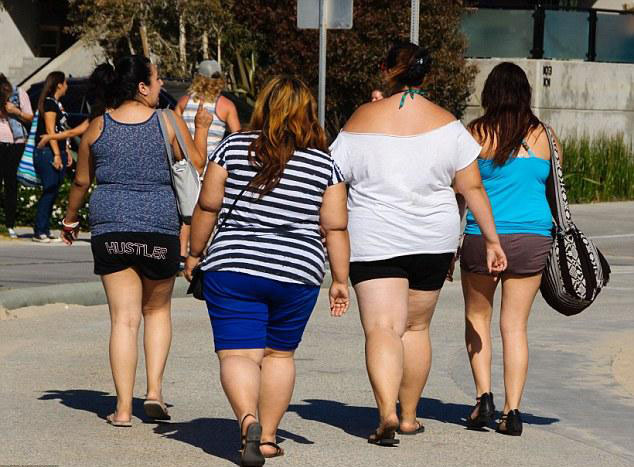Research Indicates That More Than 50 Percent Of Americans Will Be Obese By 2030!
Source: Thailand Medical News Dec 19, 2019 5 years, 11 months, 2 weeks, 5 days, 18 hours, 55 minutes ago
More than half of
American adults will be
obese within a decade and one-quarter will be severely so, a new report predicts.

The new study corrects for a weakness in previous estimates that may have made the problem seem not as big as it really is. Those estimates often relied on national health surveys and people tend to understate their weight in those. The research used a decades-long federal study in which weight was measured to get a more accurate picture of trends and to project into the future.
Dr. Lawrence Appel of Johns Hopkins University told
Thailand Medical News, "It's alarming. We're going to have some pretty awful problems medically and financially because so many people weigh too much.” Dr Appel is a nutrition expert with no role in the study.
The research was published in the the
New England Journal of Medicine. The research was led by scientists at Harvard and George Washington universities.
Typically,
obesity raises the risk of heart disease, stroke,
diabetes, cancer and other health problems. It's gauged by body mass index, or BMI, a measure of weight relative to height. Underweight or normal is a BMI under 25; overweight is 25 to 30, moderately obese is 30 to 35 and severely
obese is 35 or over.
The CDC or Centers for Disease Control and Prevention estimates that 40% of
American adults are currently
obese.
The new study predicts that by 2030, more than 50% of U.S. adults will be
obese. In 29 states, more than half will be. Roughly 24% will have
severe obesity, which is "poised to become as prevalent as overall
obesity was in the 1990s," the authors write.
From the study,
severe obesity will become the most common weight category among women (28%), blacks (32%) and low-income adults (32%).
Although it may seem like a contradiction, often people who can least afford food weigh the most.
Severe obesity will be the most common weight category in 44 states where average annual household income is under $20,000, but in only one state where income is over $50,000.
The research study was funded by the JPB Foundation, which focuses on poverty and societal problems. Despite this bad news, there have been some other hopeful signs. In May, the CDC reported that even though obesity rates were rising, new diabetes cases are declining, suggesting progress on recognizing and treating early signs of the disease.
In Mid 2019, the CDC reported declining obesity rates among preschoolers on government food aid.
Obesity among these young children fell from 16% in 2010 to around 14% in 2016.
Reference: Projected U.S. State-Level Prevalence of Adult Obesity and Severe Obesity
Zachary J. Ward, M.P.H.,Sara N. Bleich, Ph.D., Angie L. Cradock, Sc.D., Jessi
ca L. Barrett, M.P.H.,
Catherine M. Giles, M.P.H., Chasmine Flax, M.P.H., Michael W. Long, Sc.D., Steven L. Gortmaker, Ph.D. N Engl J Med 2019; 381:2440-2450, https://www.nejm.org/doi/full/10.1056/NEJMsa1909301 